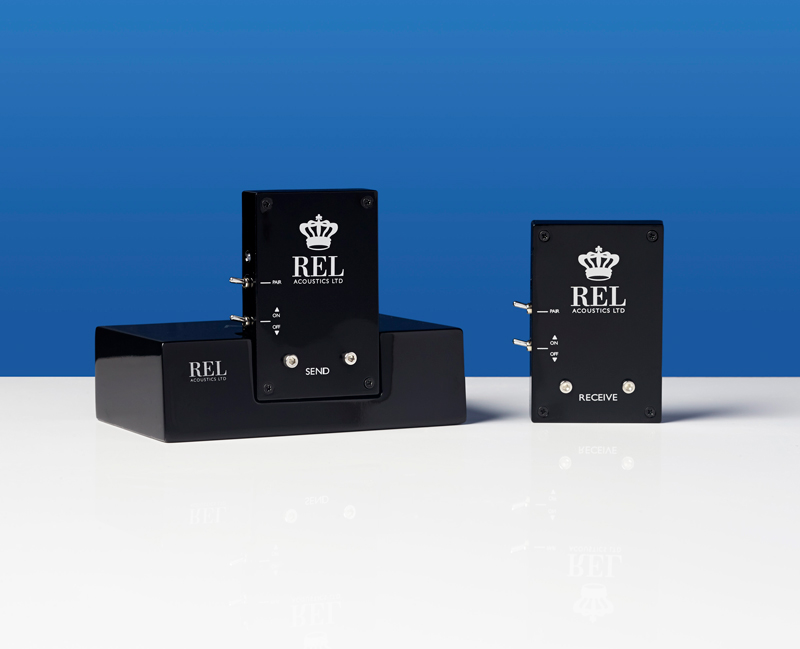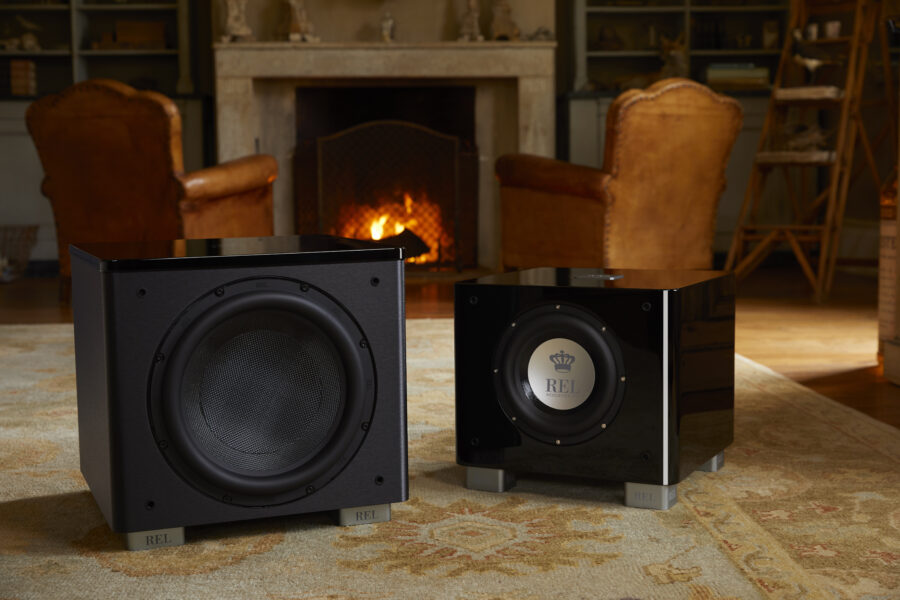Blog
Having Your Cake and Eating It Too
REL’s Arrow™ Delivers the Goods Invisibly

Ever dreamed of owning a full-blown REL 3-D system, but you thought it would be too costly or too difficult to install? It’s far less expensive and easier now than it used to be. That’s for two reasons. First, Serie HT (Home Theatre) makes utterly HUGE .1/LFE available at prices that a decade ago would net you our smallest first-gen Tzero. These days, many of our former customers have sorted out combining new HT models with Serie T/x to gain the best of both worlds. Second, the “making it easier” part is delivered by Arrow™, our wireless warrior that has been helping people solve the pain in the ass that delivering multiple signals to our rear channel subwoofer(s) of Serie T/x (and our older T/i) models could be. Between those two advances, normal folks like you and I can handle getting the rear channel sub to make 3-dimensional aural magic, just like a director’s screening room system. Maybe better.
What is REL 3-D?
REL 3-D lets users place themselves inside the 3-dimensional sonic bubble that was the promise of Dolby Digital from its outset. By allowing owners to combine REL’s High-Level Input that’s responsible for both great sound in music applications and for producing the continuous delivery of bass that the .1/LFE cannot. (Did you know LFE only has signal present for about 10-15% of most action movies? The rest of the time it is silent) PLUS, we simultaneously deliver big LFE (the biggest explosions and special effects). Heck, we even give you your own LFE input and with a dedicated level control; Serie T/x offers this facility at a fraction of the size and expense of RELs of yesteryear (Serie S and Reference do too but require more expensive wireless solutions.)
Just so you understand why that statement about the Main L-R subwoofer delivering continuous bass is SO critical, here it is. Deep (but not special effects bass) is used to create a sense of unease in scary movies; almost all of the terror created in the intro chapter of A Quiet Place II occurs in the High-Level feed, NOT via the .1/LFE. It’s used to create the warmth of timbre that the leading man needs to convey trustworthiness or the clankety-clank of a WWII Sherman tank’s treads. The uneasiness in a thousand scenes is created by dissonant medium bass, two tones close together produce a strange uneasiness in the listener. REL’s High-Level connection delivers that, while our .1/LFE input of T/x makes the biggest bangs, thumps, etc.

Three RELs (at minimum) are required to deliver this experience, and their relative importance is – 1 under the L-R main speakers, 1 for the rear surrounds, and 1 to support the center channel (surprise). Of these, the main L-R should be the largest, as the L-R mains do double duty as your main music speakers and are crucial for establishing the scale of action happening up front. The center channel uses the smallest of the 3 subs, underpinning the crucial center channel, so it can’t be tiny – use nothing smaller than a T/7x- – (the center channel is least responsible for creating scale). Surprisingly, the rear surround is responsible for conveying the 3-dimensional sense of vastness that often makes the movie. Whether it’s a Western or a modern sci-fi thriller, movie sound engineers have mastered the art of folding in tiny sounds with delay added to sell you on the scale of the scene unfolding before your eyes.
Having Your Cake: My (then-86-year-old) Mom was our beta tester to ensure ease of use with the Arrow. She figured it out with our manual and had sound in less time than it took me to write this paragraph. So, let’s jump to how easy it is to get an Arrow up and delivering that movie magic. With our easy-to-follow directions, it should take about 10 minutes (if you’re like me, reading the instructions once you convince yourself you might not know everything you think you do takes about 3 of those minutes). “Let’s see, red goes to right hot, yellow to left hot, and black to chassis ground…Check! Connect the High-Level cable to your rear channel amp or receiver’s Surround speaker connections. A short 1.5M High-Level Cable comes with the Arrow—the shorter length minimizes clutter since the Arrow is often placed close to your receiver, and who wants 33’ of high level on the ground to trip over? Go ahead and plug the .1 LFE into the Arrow’s dedicated input at this time. Plug the receiver into the 9-pin connector on the rear panel of your Serie T/x. Gently tighten the bolts that lock it in, but don’t turn it on just yet. Now, if you have a friend or partner ask them to turn on the transmitter while you turn on the receiver and both of you flick the momentary contact switches that are labeled Pair. Instantly both will stop blinking and go to steady On. You’re done with the connection!
Opening up the incredible possibilities of REL 3-D theatre through the use of our Arrow and Serie T/x(with a big banger of one of our HTs) is wonderful for us to watch. Even seasoned salespeople often have no idea just how much has been left out of the traditional home theatre. Many long-timers are amazed at how many of the techniques from high-end 2-channel are utilized in home theatre. In the end, movies (and I include many of the wonderful streaming platforms that have sprung to life in the past 5 years in that statement) are about wonder and amazement, and we’re happy to be part of your journey. Now that you know a bit more about why we created the Arrow and built in all its capabilities – especially its ease of use and affordability, perhaps you’ll enjoy it just that much more the next time you and your tribe sit down to enjoy your home’s theatre.
Thank you for reading our latest blog. We strive to provide content that’s both entertaining and educational.
If you have questions or suggestions for future articles, reach out to us at contactus@rel.net. We value your input and will do our best to respond within a few days.
With over 160 years of combined experience, we’re committed to making your audio experience exceptional. If you found value in this piece, please share it with friends who might benefit.











